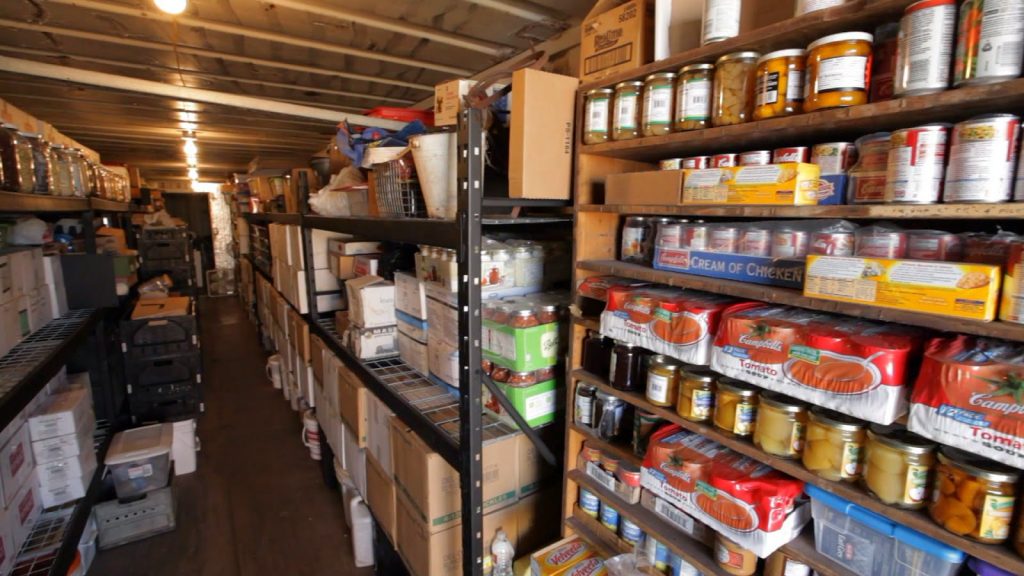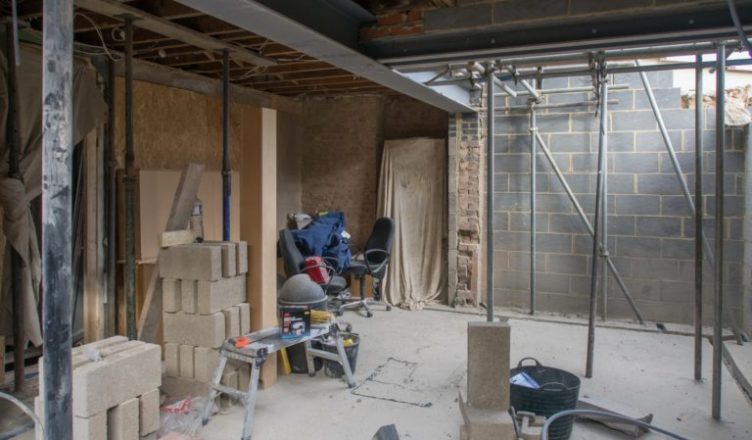Most people think that bunkers are only used during wars, however, they apply to everyday life and basements can serve as a survival shelter offering protection during an SHTF situation. If you’re thinking of creating a bunker, don’t just dig a hole in your backyard and set up an underground bunker. First, you should have a viable survival zone. If your home has a basement, then you may already have what is needed. Bunkers can be used in many situations, such as hurricanes, tornadoes, or civil unrest. So, here are some tips on DIY bunker and how to turn your basement into a survival shelter. With our tips, you will learn what mistakes to avoid, as well.
Take Care Of The Basement’s Moisture
Usually, basements are full of moisture and dampness since their below ground level, so it’s hard for water to dry or evaporate. Moisture can be a big problem if you’re planning to turn your basement into a survival shelter.

In addition, water and moisture can lead to mold and mildew growth. This is dangerous since mildew spores can cause respiratory problems. If someone has a pre-existing respiratory condition, such as asthma, mold and mildew can be especially hazardous for them.
The best way to fix the water problem in your basement is to find the sources of where it comes from. If the water is seeping through the concrete walls, then strip the walls and use waterproof paint before installing insulation and replacing the drywall. Another option is to purchase a dehumidifier to keep the space dry. It’s essential to have a dry and safe environment in order to create a surviving shelter for you and your family.
Inspect The Basement’s Foundation
Before you start turning your basement into a bunker, take your time to inspect the basement’s structure. It’s important to make sure that the basement is structurally sound before you use it as a survival shelter.
Inspect your basement from floor to ceiling. Look for any cracks on the floor or walls. Also, check if there’s any sign of water leakage. Any structural instability should be fixed before turning it into a bunker. You don’t want to hide somewhere where it’s already unstable.
If this process seems confusing to you, think about hiring a building inspector to help you complete this important step. By having an expert look around, you can rest assured that everything is safe and ready to be turned into a survival shelter.
Manage Temperature with Insulation
In catastrophic situations, it’s not uncommon to be left without power. That means that you will feel hot summer and freezing winter even in the survival shelter. That’s why it’s important to add insulation before installing drywall. Insulation, with the soil surrounding, is a great way to regulate the temperature in your bunker. Also, insulation is helpful for keeping your food supplies edible. Make sure to stock enough sleeping bags, pillows, and blankets to stay warm.
Manage Air Quality
Managing air quality is an important step because you don’t want to bring poisonous air from outside after a nuclear explosion or airborne viral threat. Self-contained air storage and recycling system will get rid of dangerous particles in the air before it enters your bunker.
However, in case of a nuclear event, it might be best to ask for the help of an expert or someone with more knowledge than you. Having an adequate air filtration system is essential to stay well protected in your survival shelter. Air quality and recycling should be a priority when turning your basement into a bunker. Keep in mind that you can only survive three minutes without air. So, this step is the most important one.
In addition, some plants may help in converting carbon dioxide to oxygen. However, they alone are not enough to provide and process all the air in your survival shelter. But they can be a helpful addition to an air filtration system. It is recommended that every emergency survival shelter has a thermometer, a carbon dioxide alarm, a low carbon monoxide detector, a humidity gauge, an oxygen depletion gauge, a smoke alarm, and a radon detector.
Determine Water Resources
While you’re in the shelter, it’s important to stay hydrated and learn how to stockpile drinking water. In case of emergency, a bunker is a place where you wish to stay as long as possible. Typically, a person should drink one gallon of water every day. The other half is used for brushing your teeth or washing your hands.
In case of a catastrophe, municipal water will be unavailable or dangerous to drink. So, you will need to find another source of drinking water. A basement well can’t be an option, as well. You and your family should have enough water for everyone.
For short-term storage, jugs of water are enough to survive. However, in the long run, you will need to find something more cost-effective and substantial. A good idea for storing tap water is a waterBOB or 55-gallon drum. WaterBOB bag holds 100 gallons of water and is free from any spills or odors. Your water will stay safe and free from any toxins or germs.
Determine Food Storage

Having a supply of food in case of emergency will save you from running around looking for food. Emergency food supply should include canned fruits and vegetables, bulk dry food, and freeze-dried foods.
If you’re preparing for an extended stay, then you should make a list and have an organizational system. This system will keep you away from wasting any food. Make sure to look at expirations dates. So, if you find something that is going to expire soon, then bring them to your regular pantry and replace your supply with a new one. Remember that canned food can be quite heavy. So, install some heavy-duty shelves that can hold your emergency food supply. If you live in an earthquake-prone region, then make sure to secure your shelves.
Using camp stoves in your shelter is not something you should do. A build-up of carbon monoxide in an enclosed space is fatal. Instead, choose MREs or eat cold canned food without heating it.
Grow Food in Your Bunker
Even though you will have canned foods and bulks of rice, you will crave something fresh. It may sound impossible, but you can grow some plants without sunlight. The main thing you need is a source of water and an off-grid power source. The power source will keep your plants growing by giving them light. If your bunker has enough space, you can pretty much grow anything you want.
In worst-case scenarios, like nuclear war, growing your own food will be valuable. Since plants absorb the ground, that would mean absorbing nuclear isotopes, as well. So all of your plants around the house would be dangerous to eat.
Good systems for indoor and underground environments are hydroponics and aquaponics. These systems use water instead of soil, so aquaponic can include fish, as well. The fish waste would act as a fertilizer for the plants. With a little help from solar panels on the roof, you can grow food in your survival shelter a lot easier. Solar panels would keep light running which is used for growing plants.
Managing Personal Hygiene
This may be the last thing on your mind when making a bunker, but an enclosed space with multiple people can become chaotic. You and your family will still need to brush their teeth, bathe and use the bathroom. Some basements already come with a bathroom, however, if you lose water and power, then the toilet can become useless.
Stock up on wet wipes and use them to keep your body clean or use a wash rag without getting into a shower. When it comes to washing your clothes, use a 5-gallon bucket that has a lid and use a clean plunger.
Create Exits
Your survival shelter should have ways out in case your house starts falling down on you. Make sure that you create several escape routes while making a bunker. One exit should lead to the house and the other should lead to the backyard. If your basement only has one exit, then you should add a second exit on the opposite side of the first one. Numerous exits can be very helpful in case you need to get out of your shelter.

Be Smart About Sheltering
Sheltering is a great way to hide from whatever catastrophic event is happening. However, you need to know when to shelter and when to evacuate, too. You should be ready for both scenarios, so you’re not surprised when the scenario happens.

With these tips, you should be able to turn your basement into a survival shelter all prepared. Even if it takes time, it’s definitely worth it in case something disastrous happens. Turning your basement into a survival shelter is very convenient. It’s easy to head downstairs and close the door. With the right preparation, your bunker shouldn’t be damp or cold. Instead, it should provide you with comfort and a safe place to hide from whatever disaster is happening.
source : Guest Contributor



